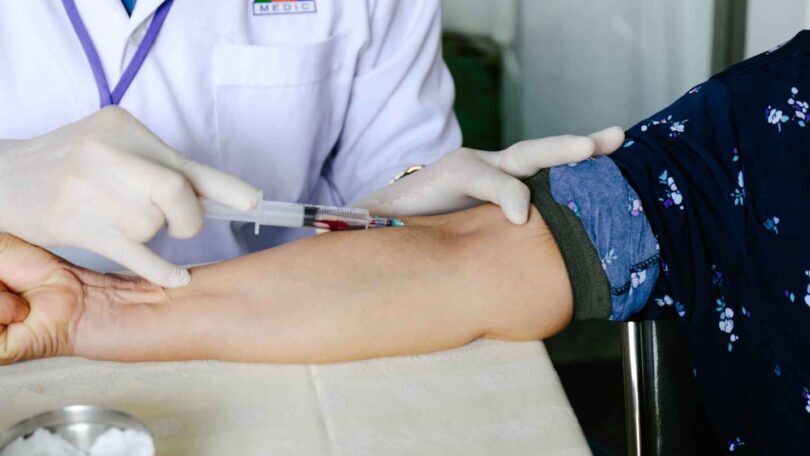Donating plasma can save the lives of many people, It is safe, easy, and beneficial but still, there are many things you should know before donate plasma.
Donating plasma is essential for those people who depend on plasma-derived therapy. But there are certain requirements that must be met before donate plasma, you must be at least 18 years of age or older, weigh at least 110 lbs, be in good health, and pass a medical examination. Before we understand why you should not donate plasma, we must understand what plasma actually is. So, let’s dive into deep.
What is plasma in the body?
Plasma is the liquid component of blood. Roughly 55% of our blood contains plasma; while the remaining 45% consists of red blood cells, white blood cells, and platelets suspended within it.
Blood Plasma Function – Plasma is essential for helping your body recover from injury, delivering nutrients, removing waste, and preventing infection while it circulates in your circulatory system.
Plasma contains approximately 92% water. Additionally, it contains about 7% essential proteins such as albumin, gamma globulin, and anti-hemophilic factor; plus, an estimated 1% mineral salts, sugars, fats hormones, and vitamins.
Plasma serves four vital roles in our bodies:
- Stabilises blood pressure and volume.
- It supplies the body with electrolytes like sodium and potassium which are important for the health of our muscles.
- Provide essential proteins to support blood clotting and immunity.
- It helps to maintain proper pH balance in the body.
What is plasma used for?
Plasma therapy is often given to trauma, burn, and shock patients, as well as those with liver disease or multiple clotting factor deficiencies, to increase their blood volume or blood clotting problems. Plasma treatments are very commonly used by all pharmaceutical companies for conditions such as immune deficiencies or bleeding disorders.
Donate Plasma Requirements
Different types of blood donations have different requirements to ensure both the safety and health benefits of the donor. To donate plasma, these requirements include:
- Be at least 18 years old
- Stay healthy overall
- Weigh at least 110 pounds (50 kg)
- Pass medical screening
- Pass HIV and hepatitis screening
- Complete medical history review screening
Some states allow teens aged 16 or over who have obtained permission from a parent to donate plasma.
How often can you donate plasma – Ideal blood types for plasma donation are AB positive and AB negative. You can donate plasma every 28 days up to 12 times in a year.
What medications prevent you from donating plasma
Certain medications and medical conditions will prevent you from donating blood, at least temporarily. Here are a few examples:
- Accutane
- Avodart
- Propecia
- Bovine insulin
- Proscar
- Soriatane
- Tegison
- Jalyn
- Anti-Platelet Medications
- Hepatitis B Immune Globulin
- Human-derived growth hormones
- Unlicensed vaccines (usually associated with research)
- Antibiotics *Donors who are taking antibiotics are eligible to donate 24 hours after their last dose.
- Blood thinners (such as Coumadin, Heparin, Lovenox, and Warfarin)
Why you shouldn’t donate plasma
Donating plasma can cause mild but occasionally minor side effects, including dehydration and fatigue. More reactions may arise but are rarely experienced.
Citrate Reaction
Citrate reactions are extremely serious yet extremely rare side effects of plasma donation, and should always be reported immediately.
At plasma donations, technicians will inject an anticoagulant known as citrate into your blood before returning it back into your body. This anticoagulant helps prevent blood clots from forming and most will remain within the plasma-separating machine before entering your bloodstream.
Citrate works by temporarily binding together small amounts of calcium molecules for an indefinitely short amount of time, creating what’s known as a “citrate reaction”. Most people don’t notice any side effects from citrate use however, donors of plasma may experience what’s called a “citrate reaction.”
Signs of Citrate Reaction:
Chills, Shivering, Shortness of Breath, Lightheadedness, Muscle Twitching, and Rapid or Slow Pulses may indicate potential symptoms; as could Vibrations Feeling vibrations throughout the body as may Numbness or Tingling in lips, fingers, and toes.
Dehydration
Plasma has a lot of water approximately 92%, for this reason – some people face dehydration after donating plasma. Although it’s not a severe dehydration after donation of plasma.
Discomfort & Bruising
Discomfort and Bruising are among the milder side effects associated with plasma donation. As soon as the needle penetrates your skin, you may experience a pinching feeling or even a dull, pulling sensation at its site, as blood from your vein is drawn into tubing before being sent on to machines that collect plasma samples.
Bruises form when blood seeps into soft tissues from punctured veins or when needle punctures leak out a small amount of blood through punctures in veins. Most bruises heal within days or weeks, though with bleeding disorders they could take much longer.
Tiredness
If the level of nutrients and salts in the body is low, fatigue may occur. Fatigue is another common side effect after plasma donation, but it is usually mild.
Infection
Every time a needle punctures the skin, there is always the risk of infection. Punctured tissue allows bacteria from outside sources into your system, and an injection needle could transport bacteria deeper within veins as well as subcutaneous layers – leading to infection at both the injection site and surrounding body tissues or even blood.
Signs of infection include warm, tender skin that appears reddened and swollen with pain at and around the injection site. It is essential that if these signs arise a medical consultation be scheduled immediately in order to avoid potential complications.
If you experience any other concerning symptoms, such as pain or fever, it is wise to seek medical attention immediately.
Why can’t you donate plasma with high blood pressure?
Plasma donation is a process by which plasma is extracted from your blood and collected for use in medical treatments. When you donate plasma, a needle will be inserted into a vein in your arm and blood will be drawn through this needle; this procedure may cause temporary drops in blood pressure which could prove dangerous if someone with high blood pressure donates their plasma.
High blood pressure may also indicate other underlying health issues that could make plasma donation dangerous, so it is wise to consult a medical professional in order to ascertain if you can safely give plasma. A professional will also provide the most up-to-date and accurate information on any restrictions or limitations that apply specifically to you.
Is donating plasma bad for you long-term?
As previously discussed, low immunoglobulin levels pose a potential risk. Over time, their levels may recover. Donations occurring frequently and long-term could also increase anemia risk as red cells may be lost through donation processes.
People Also Ask – FAQ
How long does it take to donate plasma?
First-time donors typically require about two hours for the entire process, including physical examination, medical exam, and plasma donation. Repeat donors usually only require around an hour at the center.
Can you donate plasma if you are overweight?
Yes! Donating plasma is available to everyone regardless of weight; All it requires is that you undergo an examination by your physician to find out whether you are healthy enough or not to donate plasma. You must be at least 18 years old and weigh not under 100 pounds (50 kilograms).
Can I donate plasma at two different locations?
No. To protect our donors’ health and reduce any risk associated with over-donating, donors are not permitted to visit more than one center at once. All plasma donation centers communicate regularly to ensure donors comply with this policy.
Does donating plasma burn calories?
Yes, donating plasma can help you burn between 450 – 625 calories during each donation session, depending on how much plasma is donated. If you donate 690 ml plasma you will burn 450 – 500 calories and if the volume is 825 ml you will burn 550 – 600 calories.
Why do they check your elbows when donating plasma?
Because arteries contain higher blood pressure than veins, any puncture can result in bleeding into arm tissues at or around the puncture site. That is why when you donate plasma, they always check your elbows first to make sure that your body has time to adapt before starting the donation process.
Can I donate plasma if I take Adderall?
Yes, if you take Adderall, you may donate plasma. But before doing so it would be prudent to consult your physician because the FDA requires special approval in order to donate plasma when taking stimulant medication like Adderall or Ritalin. An easy solution might be waiting two weeks and then donating.
What to eat after plasma donation?
You may feel lethargic after plasma donation as the normal protein levels in the blood will remain low for some time. Therefore, in the first days after donation, you need to consume more protein. You can find it in beans, nuts, meat, and fish.
Can donating plasma affect your menstrual cycle?
No direct evidence exists to demonstrate the impact of plasmapheresis on menstruation patterns for most women. Donating plasma removes fluid and certain proteins from your blood, but does not directly target or diminish reproductive hormones such as estrogen and progesterone that regulate menstrual cycles.
Does donating plasma affect muscle growth?
Donating plasma does not affect muscle growth directly rather, its impact is felt indirectly within 24-48 hours after exercise due to reduced physical exertion resulting from its side effects and inability to fully exert themselves to effectively induce muscle growth through workouts.
Must Read Books




